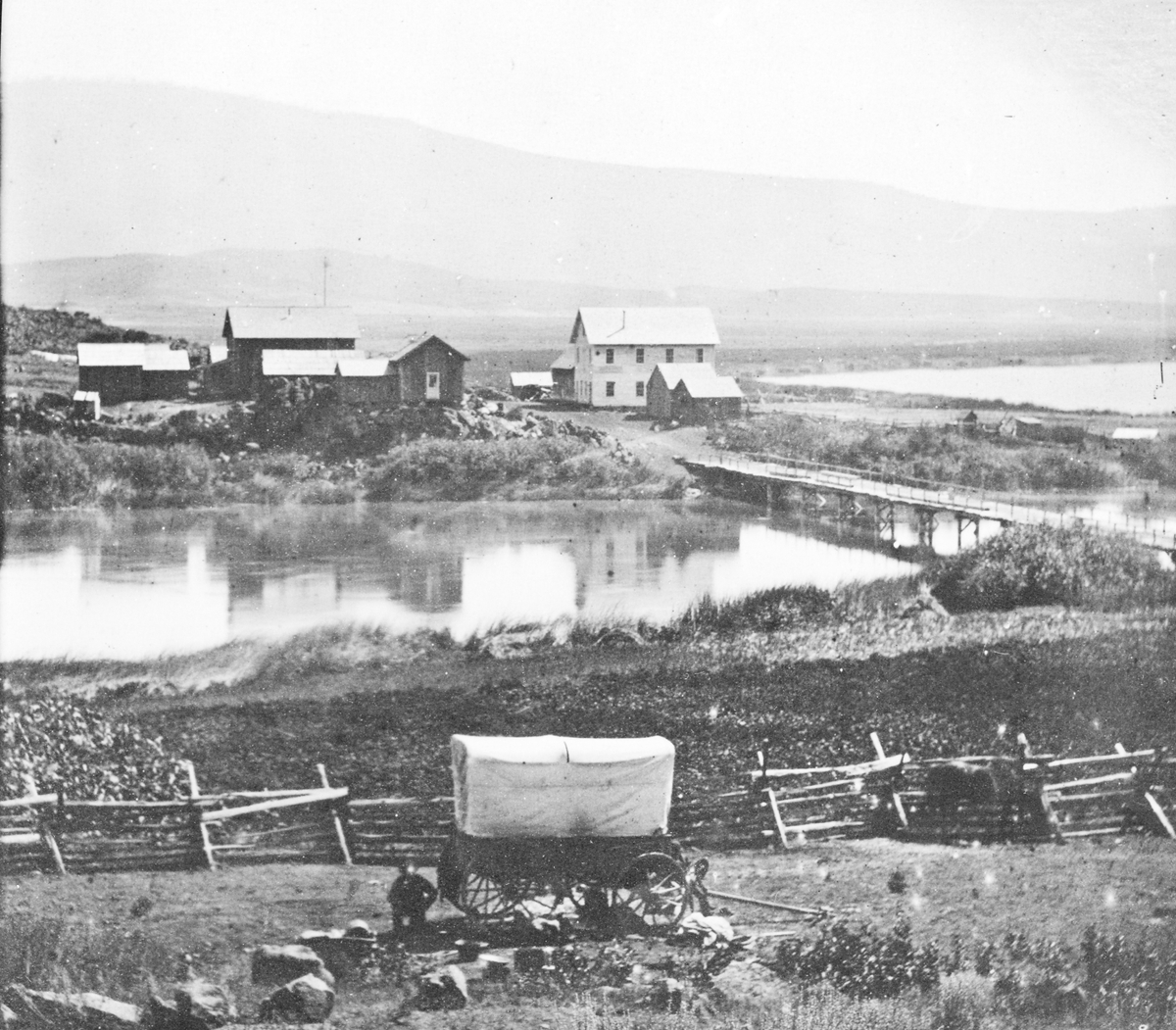The outpost of Linkville (present-day Klamath Falls) was established by George Nurse (1820–1905) in 1867 at the juncture of the Link River and Lake Ewauna. In 1874, William S. Moore (1829–1899) entered the Klamath Basin, where he built and operated a sawmill at the Klamath Agency. In 1877, he and his son, Charles Summer Moore (1857–1915), built Linkville’s first sawmill on the west bank of the Link River, about halfway along its 1.3-mile length. They dug a millrace (later named the Keno Canal) on the west bank to power the mill and transport logs from Upper Klamath Lake.
Nurse owned the land and was a partner in this enterprise, sharing thirds with William and Charles Moore. He sold the land and his interest to the Moores in 1882. William Moore turned the business over to his two sons, Charles and Rufus Scudder Moore (1855–1931), in 1887 when Rufus bought his father's interest. They operated the business until 1909 as the Moore Brothers Mill. In all, the Moore brothers owned more than 20,000 acres of land near the Link River and Keno. By 1911, they had sold all but 2,000 acres, most of it to the Weyerhauser Land and Timber Company.
Charles Moore was a Klamath County judge from 1894 to 1898 and Republican state treasurer from 1899 to 1907. He married Mary Langell in 1884, and they had two children. Charles Summer worked as a merchandise clerk and manager from 1878 to 1899, but his later years were devoted to banking and timber interests.
After quitting the milling business, Rufus worked as a Klamath County surveyor until his retirement. He was one of the first to climb and survey Mount Pitt (present-day Mount McLoughlin). He was married to Clara Shaw and had no children.
In addition to lumber, the brothers pioneered energy generation in the area. In 1892, they acquired a second canal to provide power for the Martin flour mill downstream and to irrigate the Riverside lots west of Linkville. They built a hydroelectric plant in 1905 on the Keno Canal, transmitting power to the farming communities of Merrill and Bonanza. They also built a new sawmill on Lake Ewauna in 1907. The Moore brothers' business was the sole supplier of lumber for a radius of fifty miles until 1910.
In 1910, the Moore family donated the land for the Riverside School and for a magnificent park to the City of Klamath Falls. The park was originally designated as Moore Memorial Park, dedicated to Klamath County pioneers and located on the upper west shore of Lake Ewauna. The city sold the land to the Great Northern Railway in the 1920s. Today, Moore Park is located on the southern shore of Upper Klamath Lake.
-
![Linkville, 1874.]()
Linkville, 1874.
Linkville, 1874. Photo Peter Britt, courtesy Klamath County Museum
-
![Moore Mill on the Link River, looking NE, date unknown.]()
Moore Mill on Link River.
Moore Mill on the Link River, looking NE, date unknown. Helfrich collection, Shaw Historical Library, Klamath Falls
Related Entries
Related Historical Records
Map This on the Oregon History WayFinder
The Oregon History Wayfinder is an interactive map that identifies significant places, people, and events in Oregon history.
Further Reading
Boyle, John C. "Fifty years on the Klamath." Journal of the Shaw Historical Library 1:2 (1987), 13-43.
Good, Rachael Applegate. History of Klamath County, Oregon. It’s Resources and its People. Klamath Falls, Ore.: Klamath County Historical Society, 1941.
Lamm, W. E. Lumbering in Klamath. Klamath Falls, Ore.: W. E. Lamm, 1944.



